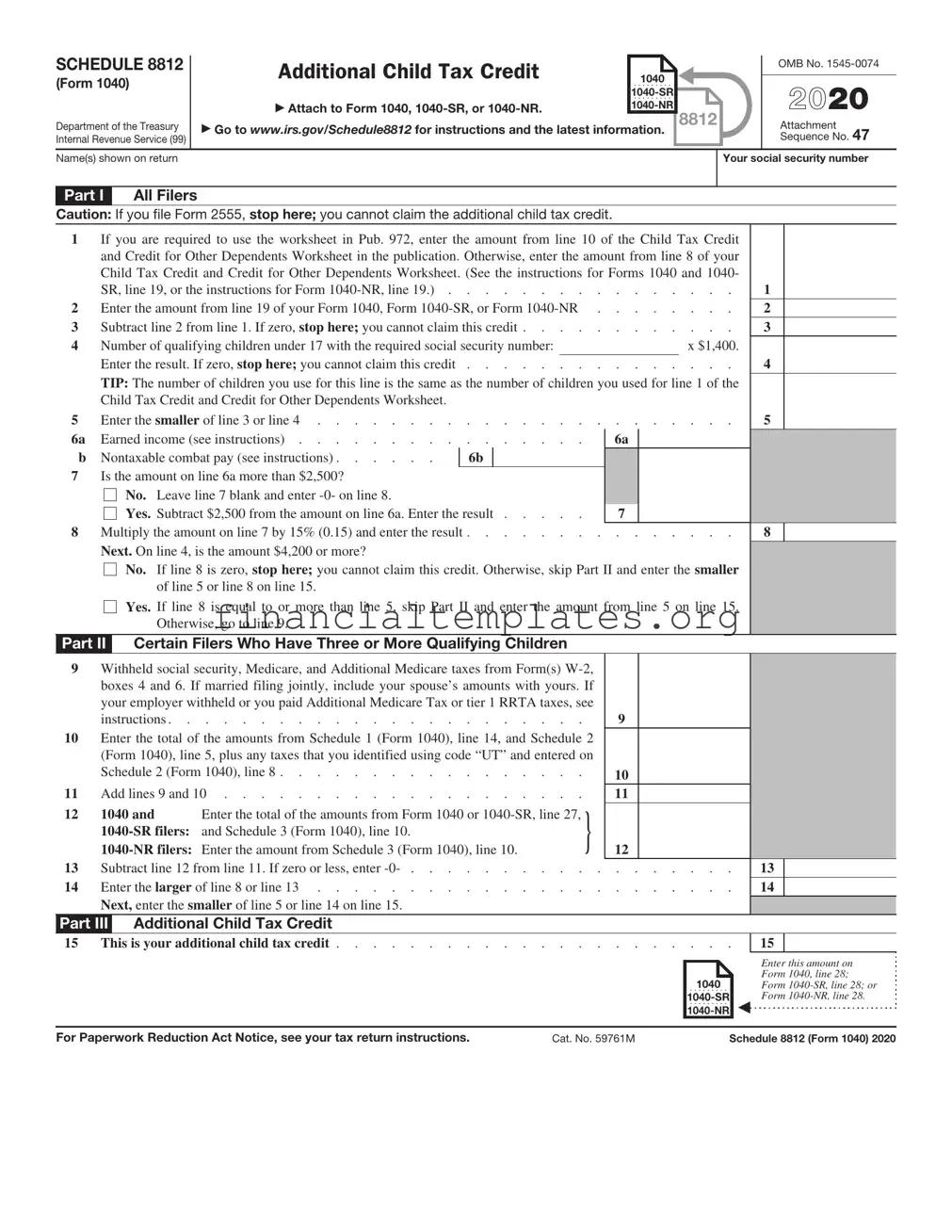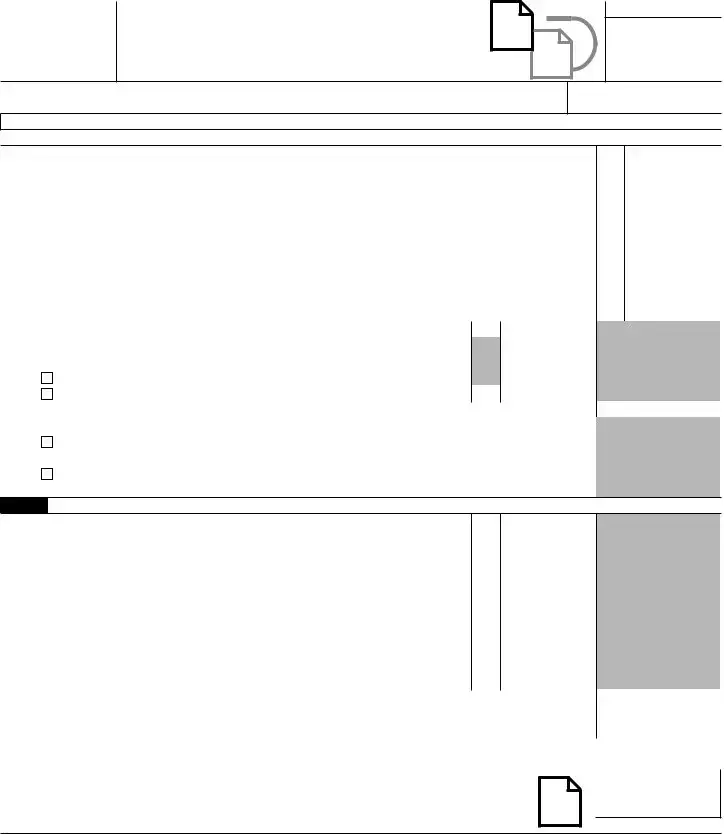The IRS Schedule 8812 1040 form is closely related to the main Form 1040, which is the U.S. Individual Income Tax Return. This foundational document is the starting point for most taxpayers, detailing income, deductions, and credits to determine the amount of tax owed or refund due. Schedule 8812 supplements Form 1040, providing specific calculations for the Child Tax Credit, indicating its relationship as a detailed exploration of a particular section of the broader tax landscape covered by Form 1040.
Similar to Schedule 8812, Form W-2, provided by employers, plays a crucial role in completing tax returns. It reports an employee's annual wages and the amount of taxes withheld from their paycheck. While W-2 forms directly feed into the information required for Form 1040, Schedule 8812 delineates the eligibility and credit amount for qualifying children, showcasing how various forms combine to provide a comprehensive view of an individual’s tax responsibilities and benefits.
Schedule EIC (Earned Income Credit) is another document that complements the purpose of Schedule 8812 by focusing on a specific tax credit. While Schedule 8812 deals with tax credits for those with qualifying children, Schedule EIC is designed for low- to moderate-income workers and families, particularly those with children, to reduce their tax liability or increase their refund. Both schedules serve to navigate the complex pathways of tax credits, yet they target different aspects of taxpayer support.
Form 8863, Education Credits (American Opportunity and Lifetime Learning Credits), is akin to Schedule 8812 in that it pertains to a specific tax benefit, in this case, education-related. Taxpayers use Form 8863 to calculate and claim credits for education expenses paid for themselves, a spouse, or dependents. This mirrors the structured approach of Schedule 8812, which focuses on outlining the child tax credit rather than educational expenses, highlighting the tailored nature of various tax documents to specific financial scenarios.
The Child and Dependent Care Expenses Form, or Form 2441, also shares similarities with Schedule 8812. Both forms are designed to assist taxpayers in claiming credits related to the care of qualifying individuals. However, while Schedule 8812 is focused on the Child Tax Credit, Form 2441 helps taxpayers calculate the credit for child and dependent care expenses necessary for employment. This delineation between the forms underlines the IRS's segmentation of tax benefits based on the nature of the expenses and the beneficiaries involved.
Form 8962, the Premium Tax Credit (PTC) form, is used to calculate the premium tax credit and reconcile any advance payments of the credit. Like Schedule 8812, Form 8962 caters to a specific group of taxpayers—those who have purchased health insurance through the marketplace. Both documents serve to ensure that eligible taxpayers receive the proper tax credits, be it for health insurance through Form 8962 or child-related expenses through Schedule 8812, emphasizing the targeted approach of the IRS in administering tax benefits.
Lastly, the Adoption Credit Form 8839 bears resemblance to Schedule 8812 by offering tax relief to families with specific circumstances. This time, the focus is on providing financial relief for those who have incurred adoption expenses. Similar to how Schedule 8812 assists taxpayers in claiming credits for dependent children, Form 8839 aids in recouping some of the substantial costs associated with adoption. Both forms underscore the IRS’s efforts to support families through tax relief mechanisms tailored to their unique life events.

